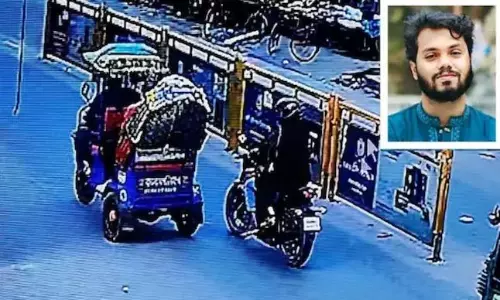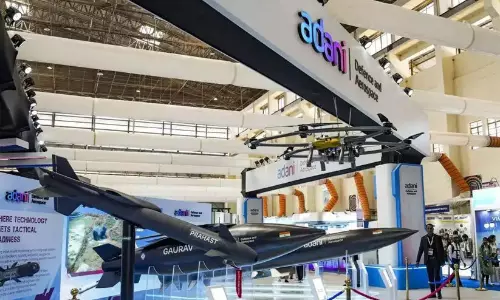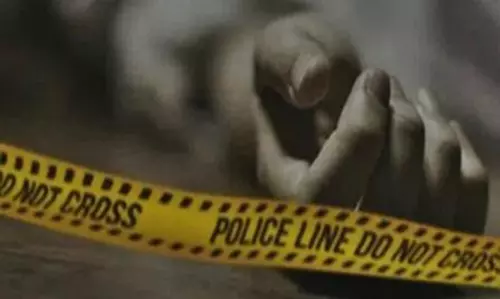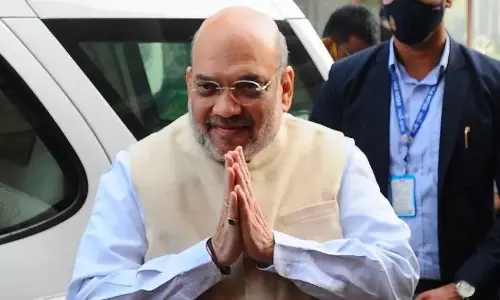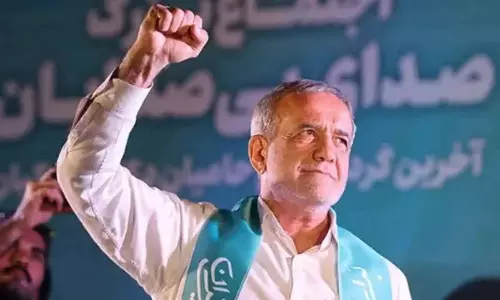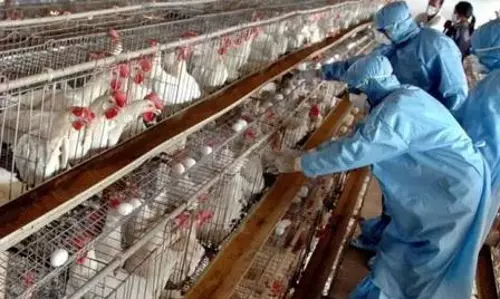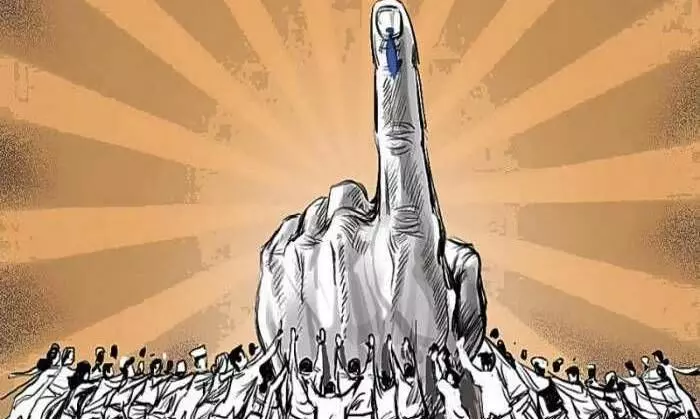
Synchronised elections: Matter of ‘Public Interest’ rather than political claims
text_fieldsThe Constitution of India is unique in many ways and does not fit into any pre-existing models. The makers kept all windows open and they were really learning from the experience of other nations. Finally, they gave us a Constitution with an inbuilt character of its own. The Constitution has had organic growth in our soil in the past. It is constantly in the making.
Dr Ambedkar sternly affirmed in the Constituent Assembly that “by parliamentary democracy, we mean one man, one vote”. There was no mention of the ‘one nation, one election’ norm as constituting the pillar of democracy by the framers. They were more concerned about bestowing universal adult suffrage based on equal voting rights on every adult Indian without any distinction.
It is said that democracy is difficult to be defined. It has meant different things to different people. In fact, no political term has ever been subjected to so many contradictory definitions as democracy. It has now become fashionable and profitable for every Nation State to proclaim itself as democratic. History would tell us that the erstwhile Soviet Union, the Communist States of Eastern Europe, the Chinese People’s Republic and North Korea all proclaimed themselves as democracies. So did General Stoessner’s Paraguay and Sukarno’s Indonesia. Yet, if anything is clear, it is that these States did not meet at all the definition of democracy.
In the real world, there is a wide gap between the concept of democracy and the actual working of democracy. The ‘ought’ of democracy is seldom detected in the ‘is’ of democracy. Democracy proceeds on the capacity of the people to elect their representatives and faith in the representatives to represent the people. The Supreme Court in Kesavananda Bharati Case recognized this principle. The parliamentary system is one in which the Parliament enjoys a place of primacy and pre-eminence in the governance of the State and the executive authority is fully responsible to the directly elected representatives of the people.
Democracy can function only based on the faith of the people and it is that unflinching faith which is tested through regular and periodical elections to ascertain the popular will which is not a mere ritual calculated to generate illusion, but a reality. Democracy being the ‘basic feature’ of the constitutional set-up, there can be no doubt that holding of free and fair election to the legislative bodies alone can guarantee the growth of a healthy democracy. The Supreme Court has recognized democratic set-up which postulates free and fair periodical elections as part of the basic structure of the Constitution. The Legislature is the citadel where the democracy is in action. Principle of ‘one nation, one election’ cannot be seen as a universal doctrine constituting the hallmark of democracy, since it is more concerned with the procedure of election than the right of a citizen as the master of ballot in democracy.
Election is the cornerstone on which the magnificent edifice of democracy rests. So much so, electoral law has to be dynamic, effective and efficient, responding to the changing situations and growing needs of the vital, organic people. With the Cabinet approving the report of the High-Level Committee on ‘one nation, one election’ , it seems that the nation is swiftly moving towards simultaneous elections for Lok Sabha and State Legislative Assemblies, thus following the practice in vogue in seven democracies including Germany, Japan, South Africa and Sweden.
Mapping the history
In the initial Independent era, elections to Lok Sabha and State Legislative Assemblies were held simultaneously. It was then seen as efficient and convenient. It had its benefits and disadvantages in the political environment. In the post-independence period during 1951-52, India initiated its first election cycle to Lok Sabha and State Legislative Assemblies simultaneously. The concept of one nation, one election prevailed as the norm until 1967. However, the subsequent turn of events following the dissolution of some Legislative Assemblies in 1968 and 1969 and the dissolution of Lok Sabha in December 1970 necessitated the holding of elections to the Lok Sabha and State Assemblies separately.
It is seen that frequent elections lead to disruption of normal public life and impact the functioning of essential services and developmental activities. With Model Code of Conduct coming into force and with the ban on taking policy decisions and making appointments, all developmental activities become virtually stalled. Whatever be the reason which Indian polity can offer, there is uniformity of opinion that holding simultaneous elections would save time and public money by reducing the burden on the administrative set up and security forces. However, this is a matter to be implemented through national consensus and with the approval of the political parties.
Concerns about the Parliamentary system
There is an argument that the very idea of simultaneous elections may undermine the parliamentary system. The Parliamentary System founded on the Westminster Model offers to the executive the special privilege of dissolution of the Legislature before the expiry of its normal term in emergency situations. This practice may possibly end if concurrent and simultaneous election is held to the Lok Sabha and to all State Legislative Assemblies once in 5 years.
It is relevant to note that Article 83 of the Constitution which deals with duration of Houses of Parliament makes it clear that the Council of States (Rajya Sabha) shall not be subject to dissolution. However, in respect of the House of the People (Lok Sabha), Article 83(2) contemplates earlier dissolution of the House also, before the end of the normal term of five years. Similarly, Article 172(1) also contemplates situations of earlier dissolution of the Assembly before the end of its normal term of five years. What would happen when a State Legislative Assembly is dissolved before its normal term of five years? Will it have to wait till the conduct of elections to the Lok Sabha?
The Constitution Bench of the Supreme Court in Re Presidential Reference,2002 (AIR 2003 SC 87) held thus: “On premature dissolution of an Assembly, the Election Commission is required to initiate immediate steps for holding election for constituting Assembly on the first occasion and, in any case, within six months from the date of premature dissolution of the Assembly”. The consequential fallout of not holding elections for a long time would be the functioning of a caretaker government, which may be contrary to the principle of responsible government.
Yet another facet of the matter is that imposition of President’s Rule under Article 356 can also lead to early dissolution of the State Assembly. But such dissolution can take place only after the proclamation imposing President’s Rule is approved by the Parliament. Past trends have manifested that the exercise of power springing from Article 356 could be prone to dangers and abuse, with the Article becoming a rule rather than an exception. If that be so, it would go against the pious wishes of our constitutional framers. It is worth pondering here over the observations of Dr. B.R. Ambedkar with reference to Article 356 that “such Articles will never be called into operation and they would remain a dead letter”. Of course, the judicial guidelines evolved in S.R.Bommai v. Union of India (1994) 3 SCC-1 guide the exercise of power under Article 356.
Structuring the election cycle
Simultaneous elections would involve structuring the election cycle in a manner where the voter would normally cast the vote for electing members to the Lok Sabha and the State Legislative Assembly on a single day and at the same time. This may impact the voter’s behaviour for voting in Assembly elections substantially. Synchronised elections may result in voters conflating national and state issues and may vote for the same party both at the Centre and State. This may lead to national parties winning and gaining power both at the Centre and States, thereby eliminating regional parties from the electoral scenario which often represent the interest of local social and economic groups. The point to be deliberated is whether this sounds ideal for democracy. Diversity of opinion and plurality of parties is essential to free and fair elections and this could be defeated with simultaneous elections. The width and depth of deep democracy may become undermined with synchronised elections becoming the rule.
‘Basic Structure’ violation
There could be genuine fears that ‘one nation, one election’ concept may violate the ‘basic structure’ of the Constitution. The question is whether sequential elections form part of the basic structure. The concept of ‘basic structure’ essentially entails those zones falling within the ambit of ‘free and fair elections’ in democracy, to which it could be added that the manner of conduct of elections forms its extended part. The Supreme Court had clarified in Kihoto Hollohan(1993) that free and fair elections forms part of basic structure. For qualifying to be the basic structure, a provision must be a terrestrial concept having its habitat within the four corners of the Constitution as held by the Supreme Court in Indira Nehru Gandhi v.Raj Narayan(AIR 1975 SC2299), while upholding democracy, which implies free and fair election as basic structure. In Kesavananda Bharati V. State of Kerala (AIR 1973 SC1461) also, the Supreme Court recognized democratic character of our polity as basic structure.
Thus, it has to be clearly shown that regardless of the manner of conducting the elections, the procedure followed leaves the sanctity of the elections unaltered and undisturbed and ensures a continued guarantee of free and fair elections, in order to hold one election norm as not in conflict with the doctrine of basic structure.The Madras High Court in Thirubhuvanam Silk Handloom Weavers’ Co-operative Production and Sales Society Limited v. State of Tamil Nadu (1991) has also elaborately considered the principle of Democracy, which implies free and fair election as constituting the basic structure.
Elections generally belong to the people and the political branch of the Government. All matters relating to holding of elections or affecting elections are political questions, and as such, are not questions for the judiciary, in the absence of controlling constitutional or statutory provisions to the contrary. However, these are obviously matters of public interest and not of mere political claims. They are claims that constitute paramount legislative concern. What part of the election is political question, remaining beyond judicial scrutiny, is yet to be answered clearly. In Truman H.Newberry case, the American Supreme Court held that manner of election can be controlled. But what is the extent? Sir Owen Dixon’s classical statement may perhaps guide us in the search for an answer. The law that a sovereign can act only by law is supreme, but as to what may be done by a law so made, the sovereign is supreme over the law.
Not an easy task
Introducing reforms in the domain of the electoral system is not easy. There could always be people who view the changes with doubt and who want the status-quo to be continued throughout. However, any such change for ‘one election’ can be brought in only by making substantial amendments to Articles 83 and Article 172 of the Constitution, apart from bringing necessary modifications to The Representation of the People Act, 1951. A further clause needs to be added to Article 83 clarifying that when the House of the People is dissolved before the expiration of the stipulated period of 5 years, the State Legislative Assemblies shall also stand dissolved automatically. Similarly, a further proviso has to be added in Article 172 stating that the period of the State Legislative Assembly may be curtailed to enable the conduct of election to the State Legislative Assembly simultaneously with election to the House of the People. Such changes could be subjected to judicial review on the touchstone of the ‘basic structure’ doctrine.
A Constitution needs to be a ‘living document’ capable of meeting the expectations of the organic people and adapting to the requirements of changing generations and their growing needs. However, there are some intrinsic values such as democracy that imply free and fair elections and federalism as constituting the ‘framework originalism’ on which the contents of the Constitution rests. It is this framework of originalism that requires to be preserved and protected in democracy through sustained legislative action and judicial measures. The Centre’s approval to implement the ‘one nation, one election’ rule shall not disturb or damage the living Constitution’s framework of originalism.
Dr Pauly Mathew Muricken is a lawyer, writer, and academic based in Kochi, and the views expressed are personal.




